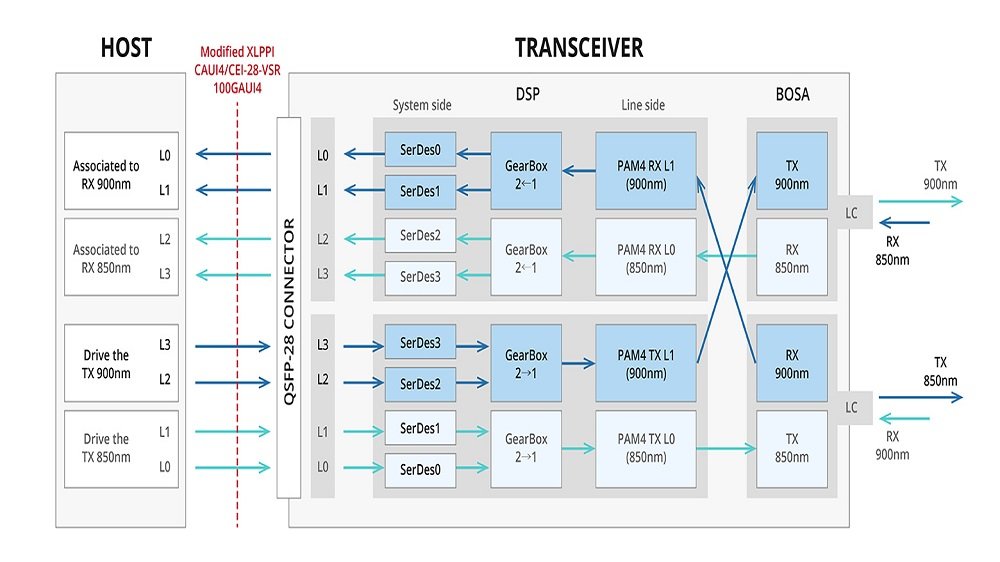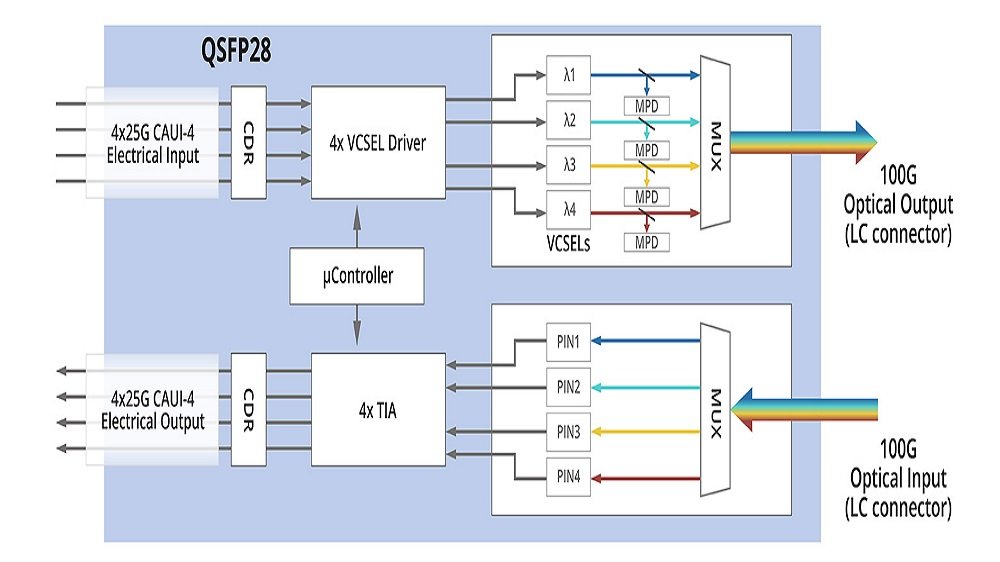Hey, are you also keeping an eye on what’s happening in the data center and network communications space?In this era of rapid growth in data traffic, 100G QSFP28 optical transceivers have undoubtedly become a hot topic.Among the many models of 100G optical transceivers, there are two products that stand out in particular: 100G SRBD and 100G SWDM4. So, which of these two optical modules is more suitable for your needs?Let’s dive into them together to provide more information for your choice.
Table of Contents
TogglePerformance comparison, the basic information you should know:
SRBD and SWDM4 optical modules have their own advantages in terms of performance, let’s briefly compare.
Transmission Rate:
SRBD: 70 meters for OM3 fiber, up to 100 meters for OM4, and possibly more for OM5.
SWDM4: OM3 fiber 70 meters, OM4 up to 100 meters, OM5 up to 150 meters.
Power consumption:
Both perform well in terms of power consumption, depending on the manufacturer and product, but SWDM4 may be more energy efficient due to its advanced technology.For long-distance transmission, SWDM4 is more suitable; Fiber resources are tight, and SRBD is more convenient.


Cost comparison, quality and price should be grasped:
The cost of optical modules is a big problem. Let’s take a look at which 100G SRBD or 100G SWDM4 is more cost-effective.
The optical transceiver itself:
SRBD: The technical complexity may be slightly higher, but short-range applications are its strength.
SWDM4: The multiplexing technology reduces the cost, has a wide market application, and has strong competitiveness.
Fiber Infrastructure:
SRBD: Single-fiber bidirectional, fiber-saving, and more cost-effective to upgrade existing networks.
SWDM4: While multiplexing techniques are efficient, longer distances or high rates may require more fiber.
All things considered:
With short-distance, high-density cabling, SRBD is more cost-effective and easy to cabling.
For long-distance or complex networks, SWDM4 fiber utilization is high and may be more cost-effective in the long run.
In the comparison of application scenarios, on-demand purchase is the last word
If you’re in a data center with short-distance, high-density cabling:
SRBD optical transceiver is your helper. It can transmit data in both directions, save fiber optics, and simple wiring. Especially suitable for data centers that have already been wired and want to upgrade the bandwidth? It’s the right choice!
If you’re connecting to a long-distance or complex network:
Then SWDM4 optical transceiver is more suitable for you. It can multiplex optical signals in multiple bands, and a single optical fiber can transmit 100G, which is still far away. Complex network topology? SWDM4 is also easy to handle, with good compatibility and easy expansion.
Consider Upgrades and Compatibility:
Already have a multimode fiber network? SRBD allows you to save money and worry, just upgrade directly.
Want to expand your network in the future? SWDM4 is more flexible, technologically advanced, and adaptable.
Cost & Return on Investment:
Short-distance, high-density cabling, SRBD is less costly, and the results are fast.
For long-distance or complex networks, SWDM4 is more cost-effective and cost-effective in the long run.
Summary
Therefore, which optical module to choose depends on your specific needs. Hopefully, this information will help you make an informed choice! Weimei Electronics is an optical transceiver factory with 11 years of production and operation, we have first-class production lines and professional technical support, if you are still confused about the choice of optical transceivers, please feel free to contact us!

